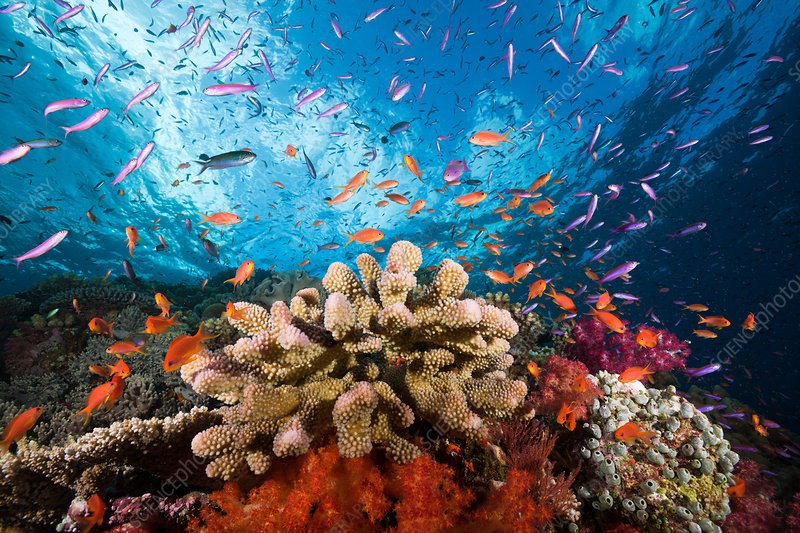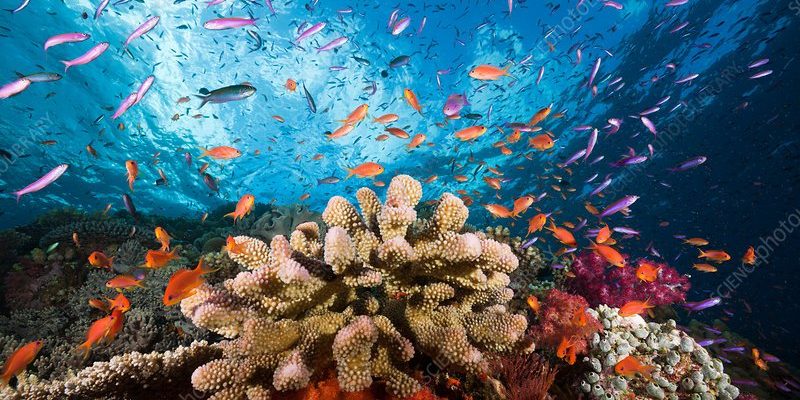
Anthias, especially the Lyretail Anthias or Sunburst Anthias, are known for darting around the tank, adding movement to your underwater landscape. However, ensuring their compatibility with corals is crucial. After all, you want your reef to thrive, not just survive. So, let’s break down everything you need to know about keeping anthias safe and happy in a coral environment.
Understanding Anthias: The Colorful Swimmers
Anthias are part of the Scorpaenidae family and are native to tropical and subtropical coral reefs. They’re often found in large schools, which is one reason they look so stunning in an aquarium setting. These fish come in vibrant colors, such as pinks, yellows, and oranges, making them a favorite among aquarium enthusiasts.
What’s unique about anthias is their social structure. They typically have a dominant male surrounded by several females. If the male is removed or dies, one of the females may change gender to take his place. This fascinating behavior speaks volumes about their adaptability and social dynamics, which can affect how they interact with other fish and corals in the tank.
Are Anthias Reef Safe?
You might be wondering if anthias are safe to keep with corals. The good news is that most anthias species are generally considered reef-safe. They typically won’t nip at or harm corals, unlike some other fish that have a knack for causing chaos in a coral setup. However, it’s important to remember that individual behavior can vary.
While anthias tend to feed on tiny zooplankton and mysis shrimp in the wild, they’re not interested in munching on your coral. Instead, they thrive on high-quality, varied diets that mimic their natural feeding habits. As long as they are well-fed and properly introduced to your tank, they should coexist peacefully with your corals.
Choosing the Right Species of Anthias
Different species of anthias have varying levels of compatibility, so it’s essential to choose wisely. The Lyretail Anthias is often recommended for beginner aquarists. They’re hardy, social, and display less aggression compared to others.
On the other hand, the Dispar Anthias is another great choice. These fish are known for their peaceful nature and stunning coloration. If you prefer a more vibrant display, the Sunburst Anthias also adds a splash of color and generally plays well with corals.
When selecting your anthias, consider the size of your tank and the other fish already present. A larger tank allows for a school of anthias, which helps them feel secure and confident.
Tank Conditions That Matter
Creating the right environment is crucial for your anthias to thrive alongside corals. Here’s what to focus on:
- Water Quality: Anthias prefer clean, stable water conditions. Aim for a pH of 8.1–8.4, specific gravity between 1.020 and 1.025, and a temperature of around 75°F to 80°F.
- Lighting: Moderate lighting works well. Too much light can stress out anthias, while insufficient light may not support coral health.
- Water Flow: Anthias enjoy moderate to strong water flow, mimicking their natural reef habitat. Good water movement helps ensure they stay healthy and active.
Keep in mind that maintaining stable tank conditions will not only benefit your anthias but also ensure your coral remains vibrant and healthy. Consistency is key!
Feeding Anthias in a Reef Tank
Feeding your anthias isn’t just about filling up their bellies; it’s also about ensuring good health and vibrant colors. Since they typically eat zooplankton and small invertebrates in the wild, you’ll want to replicate that diet to some extent.
A varied diet is essential. Here are a few options you should consider:
- Mysis Shrimp: These are a favorite and great for encouraging fish to eat.
- Pellets: Look for high-quality, sinking pellets designed for marine fish.
- Frozen Foods: Alternating between different frozen foods can help keep their meals interesting.
You might find that feeding your anthias several small meals throughout the day works better than one large feeding session. This mimics their natural foraging behavior and keeps them happy.
Common Compatibility Issues with Other Fish
While anthias are generally peaceful, they may face compatibility issues with certain fish. For instance, more aggressive species like some types of damselfish or wrasses might view anthias as a threat or a target.
If aggression becomes a problem, it can stress out your anthias, impacting their health and well-being. Ideally, you want to house them with equally peaceful fish that won’t bully them. Here’s a quick list of compatible companions:
- Clownfish
- Cardinalfish
- Gobies
- Peaceful wrasses
Always observe fish interactions closely, especially during the initial introduction phase. It may take time for everyone to settle in, but keeping a close eye can help you catch any potential issues early.
Maintaining Coral Health with Anthias
Lastly, let’s talk about how to ensure your corals thrive alongside your anthias! As you might expect, the right balance is essential. Corals need specific conditions to flourish, and you don’t want your fish to disrupt that.
Here are a few tips to maintain coral health in an anthias tank:
- Adequate Space: Ensure there’s enough space for both anthias and corals. Crowding can lead to stress, which is damaging for both.
- Feeding Techniques: Be mindful of how you feed your anthias. Excess food can accumulate and harm your corals. Aim for low waste foods to keep the water quality in check.
- Regular Maintenance: Regular water changes and care will promote the well-being of both fish and corals.
With a little attention to detail, you can keep both your anthias and corals happy and healthy.
In conclusion, keeping anthias in a coral reef aquarium can be a rewarding experience. They are generally reef-safe and add vibrancy and life to your underwater world. By choosing the right species, maintaining tank conditions, and ensuring compatible tank mates, you can create a thriving environment for both your fish and coral. Just remember, each aquarium is unique, so take it slow and enjoy the journey of creating your own beautiful reef!

